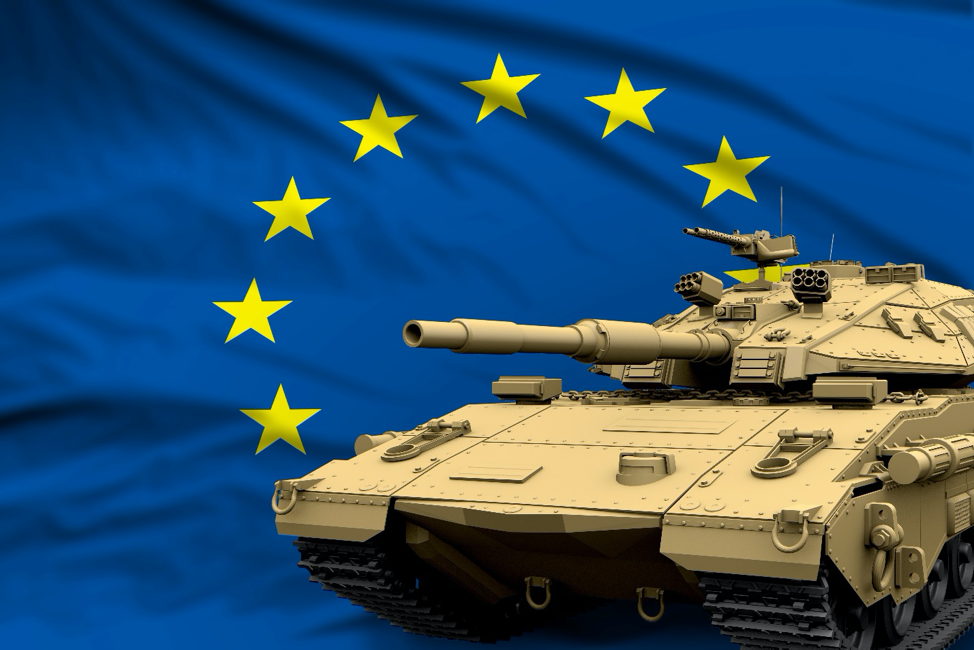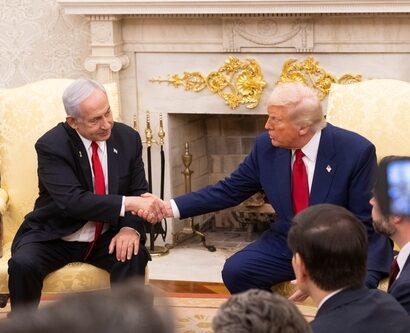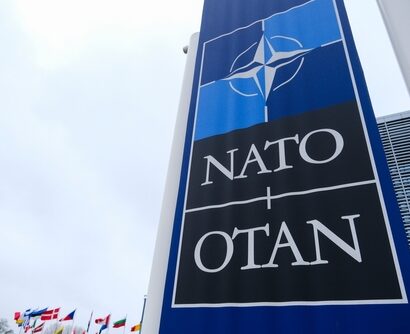Abstract: A vast majority of European Union (EU) heads of state and an increasing number of leading politicians have advocated for the initiation of an armed force within the region, preferably in the near future. Interestingly, the dialogue has not been followed by deeds, mainly due to lack of political will – a prerequisite to introducing any compulsory changes. Urgency and necessity rather might trigger said willingness. Without a doubt, Europe has the potential to operate in a strategic autonomy without excluding military terms. What seems to be lacking nonetheless, is political will, especially to define an “end state” for the EU. Shall the EU remain a supranational entity or become a federal state?
Bottom-line-up-front: Although it has been proclaimed to be a common vision among EU member states, the idea of an EU armed force is arguably more an illusion than a shared plan. Predominantly under the national parliaments’ control and directed towards the respective nation’s strategic areas of interest, EU member states lack interoperability and suffer from redundancies. As a global economic player, the EU has no assertive military force and is heavily dependent on its transatlantic alliance, NATO. Despite the fact that both requirements and availability dictate close cooperation within the EU, the vision of an armed force suffers at the hands of differing political interest(s) and visions of the union’s final status.
Problem statement: How can the EU and its member states’ ambition to create a common European Union armed force be evaluated to achieve required changes?
So what?: Unless necessity and urgency trigger the establishment of an armed force, the EU’s security- and defense-policy will remain standing on two pillars namely: (1) NATO, creating transatlantic dependence and (2) national defense efforts. In this respect, the concept of an armed force maintains its position as an illusion.

Source: shutterstock.com/Anton_Medvedev
The 28th Army
„Common European Armed Forces are overdue“, “The time has common for a 28th EU Army“, “The EU is a European nation’s vehicle to execute its defense policy” – it seems that the political advocates within the EU are increasingly championing for a common European military body.[1] The underlying motivations are both obvious and diverse. From a political perspective, common European armed forces could be understood as a tool to support and overcome the remaining national caveats on the path towards a “real, common security and defense policy within the EU”. Economists are of the opinion that the benefits derived from another direction, namely increased efficiency by decreased redundancies. Consequently, it could lead to reduced costs, affecting the need to reach benchmarks such as the 2% GDP defense budget claim agreed-on by NATO allies as well. Apparently, a common EU armed force might even allow for a topic that hardly entails any national political gains to be abandoned: If the “EU” takes care of defense issues, the nations do not have to do so. The idea of increasing military capabilities by collaboration remains unconsidered. Moreover, no tangible deeds or actions have been undertaken to move credibly towards common armed forces.
From a political perspective, common European armed forces could be understood as a tool to support and overcome the remaining national caveats on the path towards a “real, common security and defense policy within the EU”.
“The European Armed Force?“
Besides the diverging political motivations among EU member states, it appears unclear what is meant by “an EU armed force”, as well as how and when such a vision could be achieved. Ultimately, there is no common understanding of the current status quo. While some claim the project already started[2], others pleasantly await a soon to happen kick-off or anticipate that the entire project will be a long-term vision rather than a mid-term plan[3]. As such, it becomes important to initially question what the current status of the stated project is. Similarly so, to answer the question, “What are the options and limitations?”. Eventually, it is beneficial to establish a common understanding with the application of the term “common EU armed forces”.
Surprisingly, a vast majority of EU heads of states and leading politicians have advocated in general terms for the initiation of the EU armed force project. Germany, the area’s economic engine, has to take a leading position in this regard. As of recent, when it comes to clear words and tangible deeds, the political appetite has shown limitations. Germany’s Chancellor Angela Merkel has particularly framed the project as a long-term vision, although decisions of the Supreme Court definitely exclude the transfer of decisions to engage the German military to EU bodies.[4] In like manner, the leader of the European social-democratic party, Frans Timmermans, reinforced the rather vague “visionary ambition”. According to him, and contradictory to the party’s program, the project will not be implemented soon.[5]
Without a unifying vision on the topic accompanied by the lack of clear understanding and a common approach, a stalemate is reached. One of the root-causes might be found in the origins of European military collaboration. In the 1950s, it was a plainly expressed goal of the common European Defense Community (EDC) to control and limit German national rearmament. Over time, the ambition evolved towards embedding German military capabilities into a common European framework that increases efficiency (mainly from an economic point of view) and interoperability between European armed forces. Feasibly to the EU’s disadvantage, the only entity capable of providing common standards as one of the prerequisites of interoperability was the North Atlantic Treaty Organization (NATO). In essence, relying on the transatlantic alliance implies having to integrate non-European interests into European affairs.
The Problem of External Dependencies
Unfortunately, the support of transatlantic partners has not fueled European defense efforts. On the contrary, under the umbrella of the US (nuclear and conventional) military capabilities, European nations reduced their military exertions. In total, NATO as an entity invests an estimated 1,000 billion USD in defense forces. However, more than 700 billion of the aforementioned sum comprises the US share. The remaining 29 allies together spent about half of the US share on their armed forces in 2019.[6] One could call that the opposite of strategic autonomy, evidenced in figures and numbers, as seen above.
In total, NATO as an entity invests an estimated 1,000 billion USD in defense forces. However, more than 700 billion of the aforementioned sum comprises the US share.
Nevertheless, European nations are not only inferior when analyzing quantitative indicators. According to a 2013 study, all European nations, including those not embedded in NATO, reach about half of the US defense expenses while achieving less than 10% of the transatlantic armed forces’ capabilities. Several reasons exist for this, starting from redundancies, a lack of cooperation and the absence of investments in research and development in emerging technologies.[7] The status quo illustrates a grim picture in terms of efficiency. Moreover, current limitations due to national ambitions and the EU’s legal framework have not catered to providing bright future prospects.
Reality’s Limiting Factors
The EU’s current legal framework does not permit the creation of EU armed forces, both as a combination of all EU member states’ armed forces or as a compilation of multinational force elements. A common political entity purposed to mandate military operations is missing to the same extent as the willingness of all to establish a consistent command structure – from a political downwards to a tactical level. This is due to the fact that the final status of the EU has not been defined so far – a fact which probably was a precondition for the step-wise integration of the member states over the decades because there was no common vision. Contrary to NATO, the EU has no standing military command structure. It goes without saying that the preconditions for such an effort are joint political willingness and the desertion of purely nationalistic ambitions. In a secondary step, the legal framework which to this very moment excludes regulating armed forces due to their character of nations last resort – could be adapted, common and standardized armament programs introduced, the divergent military cultures harmonized. As well, a broadly accepted political command-/decision-entity could be established. When aiming for an efficient military force, there will be no space for national caveats such as parliamentary reservations or the so-called “Irish clause”, which grants member states the preservation of their neutrality. Commonality and jointness do not allow caveats.
A common political entity purposed to mandate military operations is missing to the same extent as the willingness of all to establish a consistent command structure – from a political downwards to a tactical level.
It is clear that the current framework does not match the requirements of the vision. The variety of national interests and caveats that illustrate a nations’ character have become a limit that is hard to breach. If the military is a nation’s asset of last resort, an instrument of power projecting national values and morals, requiring a common and joint leadership, the EU’s development towards a European Federation seems to be the only path to bypass the “sovereignty trap”. Such a commonly agreed vision, however, does not exist. But only in that case, the EU armed forces would not be a conglomerate of European nations’ soldiers but of EU soldiers, directly subordinated to the EU commission. Accordingly, the EU legislature might execute parliamentary control instead of the respective national parliaments. In such an EU Federation, there would be no space for member states’ caveats and vetoes. It should be clear, however, that such a structure would require a far-reaching revision and change of the EU-treaty.
Nonetheless, reality depicts a different picture. As mentioned before, the current legal framework does not permit and/or foresee any such development. On the assets side, the EU managed to introduce minor initiatives of an illustrative character. Intergovernmental cooperation in specific fields of interest is always an option, a temporary collaboration in overlapping areas could be introduced, and small joint and combined multinational force elements, the EU Battle Groups – although not even once deployed so far – were generated. The EU managed to coordinate pooling as well as sharing member states’ military capabilities, for example, when it came to the European Air Transport Command or Maritime Surveillance Operations in the Northern Sea. PESCO, the Permanent Structured Cooperation, was established to bring EU members’ armed forces in designated capability areas closer together and increase interoperability. These examples above highlight political willingness, however, the final step has not been taken thus far. The remaining question is: Are those steps just fig-leaves that conceal a shared disinterest in either credible security- and defense-policy with tangible effects or the subordination of national interests under common goals?
On Necessity and Urgency
Political willingness is the necessary prerequisite to introducing the required changes. It can be measured in words and deeds. Equally, it can overcome the limitations of national interests, caveats, financial restrictions and diverging ambitions. As a matter of fact, it can unify available resources and multiply capacities. Undisputedly, developing a strategically autonomous military unit might require a tripled or even quadrupled budgetary framework.[8] Considering that hardly any European nation invests 2% of its GDP towards armed forces, this hurdle can be undertaken. It is urgency and necessity that might trigger said political willingness. The Russian occupation of Crimea was not perceived as sufficiently threatening to push EU member states towards this final step. One can only hope that both necessity and urgency will be recognized with time. Europe has the potential to operate in strategic autonomy, even in military terms. What is unequivocally lacking is the political will to do so.
Matthias Wasinger, Ph.D., Austrian Army Officer (LTC). This article is based on Lieutenant General (ret.) Ulf von Krause’s book “Die Bundeswehr als Teil einer Europäischen Armee” (Springer 2020) and his keynote address to the Clausewitz Gesellschaft on November 23, 2020. The views contained in this article are the author’s alone and do not represent the views ofAustrian Armed Forces, the Austrian Ministry of Defense, or the Austrian Government.
[1] “Verteidigung: Kommt eine “europäische Armee“,” Europäisches Parlament, accessed March 20, 2021, https://www.europarl.europa.eu/news/de/headlines/security/20190612STO54310/verteidigung-kommt-eine-europaische-armee.
[2] Marc Röhling, “Warum die europäische Union bald ihre eigene Armee hat,“ Der Spiegel online (14.11.2017), https://www.spiegel.de/panorama/pesco-warum-die-europaeische-union-bald-ihre-eigene-armee-hat-a-00000000-0003-0001-0000-000001846132.
[3] “Verteidigung: Kommt eine “europäische Armee“,” Europäisches Parlament, accessed March 20, 2021, https://www.europarl.europa.eu/news/de/headlines/security/20190612STO54310/verteidigung-kommt-eine-europaische-armee.
[4] Ulf von Krause, Die Bundeswehr als Teil einer europäischen Armee (Wiesbaden: Springer VS, 2019), 21-22.
[5] “Forderungen nach einer Europäischen Armee – mehr als politische Rhetorik?,” RK West (23. 11. 2020), accessed March 17, 2021, https://www.clausewitz-gesellschaft.de/forderungen-nach-einer-europaeischen-armee-mehr-als-politische-rhetorik-rk-west-am-23-11-2020/.
[6] Frauke Suhr, „Die Verteidigungsausgaben der NATO-Staaten (24.06.2020), accessed March 20, 2021, https://de.statista.com/infografik/4861/militaerausgaben-nato-laender/.
[7] “Forderungen nach einer Europäischen Armee – mehr als politische Rhetorik?,” RK West (23. 11. 2020), accessed March 17, 2021, https://www.clausewitz-gesellschaft.de/forderungen-nach-einer-europaeischen-armee-mehr-als-politische-rhetorik-rk-west-am-23-11-2020/.
[8] Erich Vad, “Europe and the US: Strategic Partners in Leadership,” The Defence Horizon Journal (21.01.2021), accessed March 20, 2021, https://www.thedefencehorizon.org/post/europe-and-the-us-strategic-partners-in-leadership.






